Dog-on-dog aggression is one of the more stressful and isolating behavior problems you and your dog can experience.
Not to mention it can feel embarrassing — no one wants to be the owner with the snarling, lunging, barking four-footer at the dog park!
Fortunately, you’re not alone or without hope!
Dog-directed aggression is a relatively common canine challenge that can be improved with a combination of training, hard work, and in some cases, professional help.
Below, we’ll break down the details of dog-on-dog aggression — including why the term “aggression” is rarely the best word to use in these cases. We’ll also outline some of the causes for this canine behavioral quirk and explain how you and your dog can overcome this hurdle together.
Key Takeaways: How to Address Dog Aggression Towards Other Dogs:
- Dog-on-dog aggression and reactivity are alarming but common canine behavioral issues. It may feel like you and your dog are the odd ones out, but these are two of the most common reasons owners seek professional help.
- The root cause of most dog-on-dog reactivity and aggression is fear. However, because frightened dogs often respond by lunging and barking to make perceived threats go away, it doesn’t always look like reactive dogs are frightened.
- Dog-on-dog aggression can be reduced or eliminated in most cases. A training regimen that addresses your dog’s anxiety and promotes future success through desensitization, counter-conditioning, and disengagement can help your furry best friend overcome his overreaction to other dogs.
Words Matter: Dogs Who Demonstrate Aggressive Behavior vs Aggressive Dogs
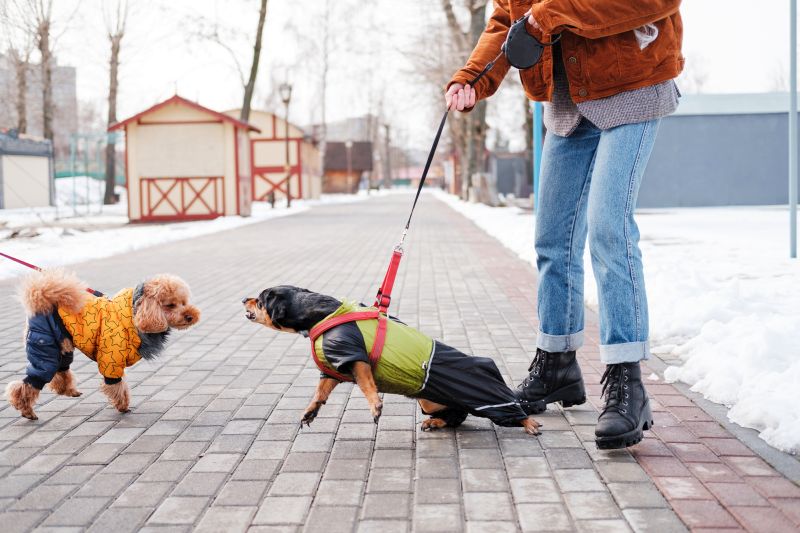
Let’s have a quick heart-to-heart on terminology, as it may alleviate some concerns surrounding your pup’s reactiveness.
Often, people hear “dog aggression” and automatically think “aggressive dog,” when that’s rarely the case.
In reality, the vast majority of dog-aggressive canines are simply exhibiting aggressive behaviors around other dogs rather than being inherently, fundamentally aggressive.
Even the most frothy, barking dogs who lunge at the end of the leash are often sweet cuddle bugs at home on the couch with their favorite people.
This distinction between behavior and temperament is important, as canine-reactive dogs are typically loving companions who react negatively to other animals as a result of underlying anxieties.
Labeling all reactive dogs as “aggressive dogs” does the dogs and their owners a disservice.
Dog-triggered aggression is better titled “dog reactivity,” though we’ll use both terms interchangeably throughout this piece since both are commonly used.
Why is Your Dog Displaying Aggression Towards Other Dogs?
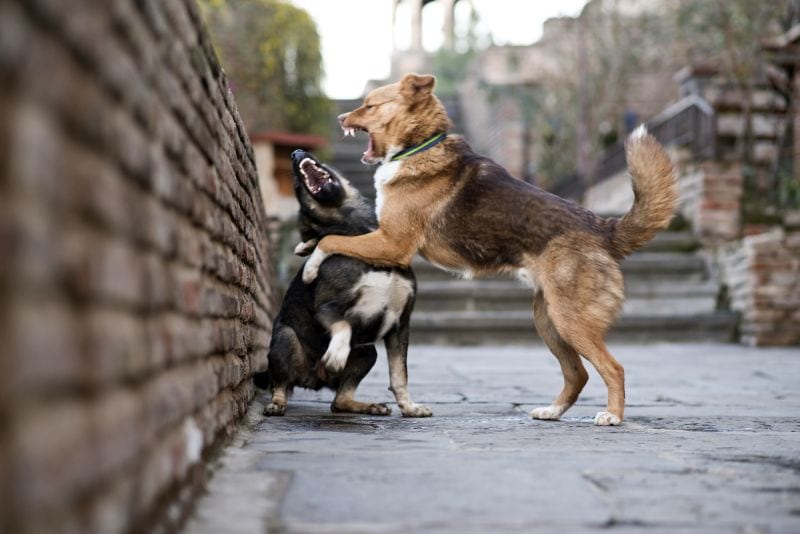
If trainers had a nickel for every time they heard “my dog keeps attacking other dogs for no reason” or “I don’t know why he hates other dogs,” they’d have a whole lot of treat money!
Your pup’s dog-on-dog aggression might appear random, but often, there’s a direct link to something in his past.
As with any behavior, aggression towards other dogs has root causes you can pinpoint and address, including:
Lack of Socialization
Positive, ongoing socialization with other dogs is critical in building your dog’s confidence and preventing fear-based reactions.
Puppies are like sponges, absorbing experiences and observing other creatures that will become normal and neutral to them as adults. However, if a puppy is not exposed to certain stimuli as a young’un, those new stimuli will be treated with fear and distrust as an adult.
That’s right – all it takes for a dog to be scared of something is just for the stimuli to be new and noteworthy.
This is why socialization should begin in puppyhood!
However, socialization is sometimes neglected due to busy schedules, vaccine-timing issues, or by an owner simply not knowing any better. Adult dogs who were not socialized as puppies and were not exposed to other dogs when they were young often because nervous or apprehensive about other strange dogs.
Traumatic Experiences With Other Dogs
Like humans, dogs remember their most traumatic moments.
An unfortunate outburst or a fight at the dog park will stick with your pup for years and may trigger a fear response in the future. For this reason, you want to thoroughly screen any new dog before setting up a socialization playdate, meaning a random dog park isn’t your best bet.
Genetics
Some breeds, such as pit bulls and Akitas, tend to exhibit more dog-aggression than other breeds (though this certainly is not a blanket rule — plenty of individual dogs from these breeds get along fantastically with other dogs).
Breeds that were bred to chase and hunt prey animals can often struggle with dog aggression – especially when the other dog is small, fluffy, and looks like prey!
For dogs with animal aggression bred in, early socialization is key to promote positive behaviors with other furry friends. It’s worth noting that just because a dog has some animal aggression baked in does not mean they are dangerous for humans.
Nearly all dogs that have been utilized historically to hunt prey require a good relationship with their human handler, making animal aggression and human aggression very different issues.
In discussing genetics, it’s also worth noting that dog aggression can sometimes be related to sex-linked aggression, which can occasionally be curbed by spaying or neutering.
Frustration
Frustration-based reactivity is most commonly seen with dogs who leash reactive dogs who act aggressively towards dogs only when leashed or tethered.
These dogs may bark and pull to get to another dog, mimicking aggressive body language. In many cases, these dogs are absolutely fine when off-leash, playing, and romping with other dogs.
However, even when a dog is only displaying reactive behaviors in an effort to access the other dog, this behavior should not be encouraged.
This means you do not want to let your dog drag you across the street to approach other dogs.
Why? Well for one, it’s rude and annoying!
It’s also very intimidating for the other dog, who may be overwhelmed by your dog’s over-the-top boisterous greeting.
In fact, your own dog’s extreme exuberance might frighten the other dog enough to result in a snarl or snap, which is of course far from ideal. On-leash dog greetings can be especially tricky, since many dogs feel trapped by being on-leash and may be more testy or sensitive than they would be off-leash.
Instead, you’ll have to teach your dog that he can’t greet every dog he sees. Learning how to observe another canine in passing calmly without becoming overly excited is essential.
A Word About Arousal
Frustration-based reactivity is a common issue for high-arousal dogs. My own dog Remy is a pit mix with extreme arousal issues.
Arousal relates to how quickly a dog becomes excited, and how excited they get. Basically, arousal is the opposite of calm.
Normal excitement is cute in dogs – a pup might get all wiggly when you approach them, or begin barking in joy. However, when a dog has arousal issues, those normal excitement behaviors can quickly become more physical and escalate with the snap of a finger.
My own dog Remy becomes easily aroused at even the smallest stimuli.
A stranger in my house standing up from the couch can launch him into a flurry of spins. Games of fetch can quickly escalate to chasing and nipping at anyone in the backyard.
Basically, once Remy starts to get excited, it’s hard for him to calm back down without help and guidance from me.
One thing that gets Remy terribly excited is other dogs.
He’s definitely not afraid of other dogs – in fact, he scans our entire walks looking for them. When he sees another dog, he gets extremely aroused and has no idea how to handle it. As I like to say, he just becomes “overwhelmed by feels”.
In some cases, if he has to watch the other dog walk away, I’ll even hear him cry and whine in frustration.
Many of these types of dogs are fine off-leash. While I have let Remy off-leash with other dogs in the past, I don’t entirely trust him because he also get very mouthy when over-aroused. So for now, Remy must simply learn how to observe other dogs calmly from a distance.
The good news is, regardless of why your pooch is displaying dog aggression, there are actions you can take to resolve or lessen your dog’s unwanted behavior. Some challenges may be harder to overcome than others, but you and your pup can get things going in the right direction with patience and positivity.
As with any aggressive behavior, a trip to the vet is recommended for dog-aggressive canines to rule out any hidden causes like injury or illness. This is especially true of dogs whose aggression seems to have started suddenly.
If your four-legged friend isn’t feeling his best, he won’t behave his best.
How to Stop Dog Aggression Towards Other Dogs
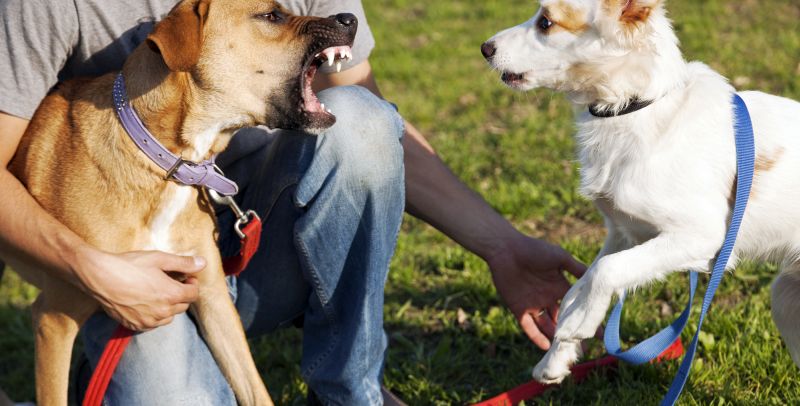
Eliminating dog-on-dog aggression requires you to teach your pup that other dogs are nothing to fear or get upset over. This is a multi-step process that seems daunting, but when you break it down into segments, it’s not so bad.
Desensitization
Systematic dog desensitization is a behavior modification method that requires gradual exposure to a trigger, so that the trigger is no longer novel or unusual. A combination of desensitization and counter-conditioning can help your dog conquer any fear. We’re starting with desensitization here, but we’ll get into counter-conditioning in the next step!
Desensitization refers to getting your dog accustomed to a stimulus so that your dog is no longer sensitive to it. Remember how we said earlier that adult dogs are naturally fearful and nervous around new stimuli?
The goal with desensitization is to make the stimulus so familiar and present in the dog’s life that it’s no longer new or novel (and therefore, less worthy of panic).
Generally, your starting point will be allowing your dog to observe other leashed dogs from a great enough distance that he doesn’t whine or lunge.
In trainer-speak, this is referred to as keeping the dog “under-threshold.” Basically, you are keeping the dog at a distance where he can remain calm and isn’t barking, lunging, or generally freaking out.
It’s uneventful on the surface, but this gradual exposure with no negative result teaches him, “I saw a dog, and nothing bad happened.”
More importantly, because your dog isn’t reaching his threshold and freaking out during the encounter, you’re preventing him from “practicing” the undesirable behavior.
You’re also undoing previously ingrained fear responses and replacing them with mere observation.
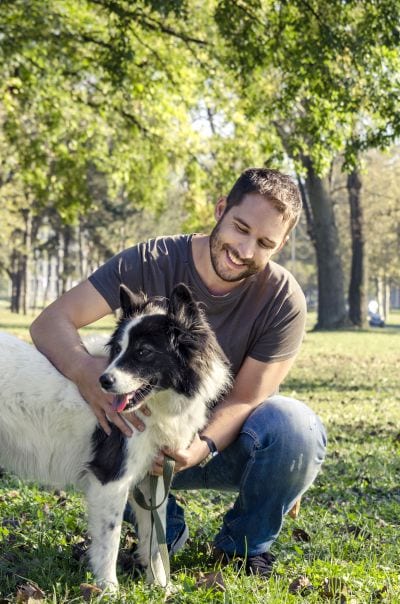
The most important rules of desensitization training are to listen to your dog’s nonverbal cues and not rush the process. Every dog has a unique tolerance threshold that may change by the day, and it’s critical you respect this boundary to prevent him from becoming overstimulated.
Just because you think that your dog should be able to handle being 20 yards from another dog doesn’t mean that he can. Start at where your dog is comfortable, not where you think he should be.
He needs to work up to the ultimate goal, not race to the finish line!
Counter-Conditioning
Counter-conditioning goes hand-in-hand with desensitization.
Counter-conditioning refers to replacing your pup’s negative feelings about other dogs with positive ones — a crucial step in fearful dogs overcoming phobias.
Desensitization is all about increasing your dog’s exposure to other dogs, but counter-conditioning is where most of the meat-and-potatoes work happens.
Start by rewarding your dog with treats when he sees another canine in passing and stays under his threshold. This tasty reward forms an association of, “Hey, I saw another dog, and something good (a treat) happened.”
Initially, you’ll want to use obscenely high-value treats that he loves and doesn’t often get while doing this kind of work. Think hot dog chunks, super-premium high-value treats, or bacon.
Many trainers also find it helpful to not just give the dog the treat, but instead to throw it into some grass. This requires your dog to sniff around to find the treat, with sniffing being a naturally calming behavior for dogs as well as serving as a longer distraction break from the other dog.
Remember, as you work on counter-conditioning, you still want to be working below your dog’s threshold. You can slowly decrease the space between you and the other dogs, but not right away. You may have to spend quite some time doing counter-conditioning work at a great distance before your dog can handle even getting a few feet closer.
Teaching Your Dog to Disengage
Teaching your dog to break his focus on other canines and return his attention to you is a must during training to progress.
Thankfully, you have those high-value treats we talked about above, so it’s easier than you’d think (as long as you keep him under his threshold).
Through counter-conditioning, your dog will hopefully learn to automatically look at you for a goodie when he sees another dog, because he now associates the other doggo with tasty rewards.
Alternatively, you can also work on teaching your dog a “look at me” command by rewarding him for looking at you.
If your dog refuses to break his focus on the other dog to look your way, increase your distance from the trigger, give him a minute to calm down, and then try again. Chances are, you’ve exceeded his threshold.
Over time, you can decrease the distance between your dog and others when appropriate, but starting with these fundamentals is a must in rebuilding your pup’s view of other dogs and reducing his anxieties.
Gear You’ll Need to Put an End to Dog-Directed Aggression
Kicking dog-on-dog aggression to the curb is easier when you have the right tools, including:
- Treat pouch: Ideally, you want an easy-to-access, hands-free bag to store the goods during training. It might clip on your belt or function as a shoulder bag, but most importantly, it shouldn’t get in the way or distract you or your dog from the task at hand. Since you’re planning on toting high-value items that are often smelly or oily, a washable liner wouldn’t hurt either.
- High-value treats: These shouldn’t be your dog’s everyday cookies. You want to select snacks that grab your dog’s attention through smell and taste, like liverwurst, stinky liver-based treats, or bologna.
- Clicker or marker word: Some owners prefer to implement a clicker in their training, while others prefer a marker word like “Yes!” or a marker sound, like a whistle. You use these to signify when your dog does something good, like not reacting negatively or looking at you instead of the other dog. These markers should always be followed by a treat.
- Lead: Always work with your dog while he is leashed to maintain a safe environment for everyone. Ideally, you want a lead that gives you both a little breathing room but still gives you complete control over your dog.
Thankfully, none of these items will break the bank, and you likely already have some (if not all) on hand.
A Training Plan for Dogs Exhibiting Dog-Directed Aggression
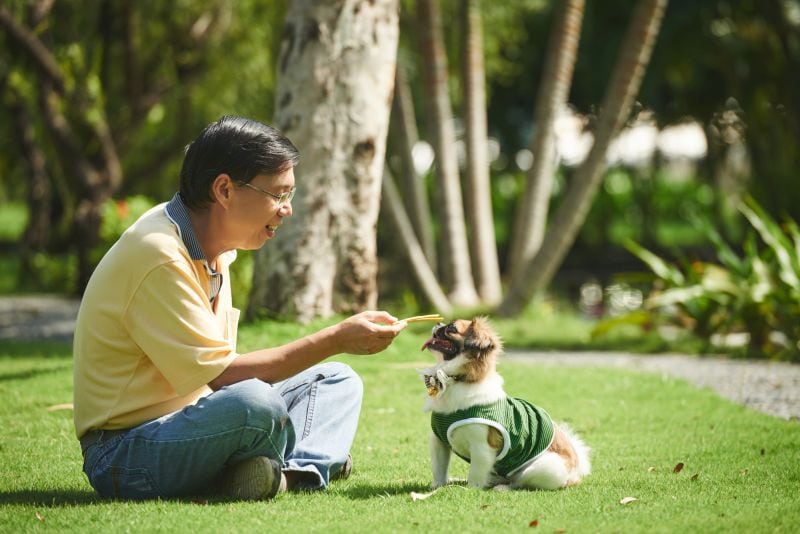
Training your dog not to overreact when he sees another dog is pretty straightforward. It can be tedious at times, but it’s an excellent bonding experience for you and your dog. It’s also necessary for everyone’s safety (and your sanity).
For ongoing success, it’s best to establish a plan and stick to it.
Here’s our sample training plan for combating dog-on-dog aggression:
- Establish clicker cues or create a marker word (like “Yes”). You want your dog to associate these cues with a tasty treat. Make sure to read up on clicker training beforehand, as you’ll need to charge the clicker and teach your dog that a click from the clicker = treat time!
- While remaining at a significant distance, mark and reward your dog for looking at another dog and not reacting. This means no barking, lunging, growling, or exceeding his threshold. If your dog reacts, you need to add more distance, let him calm down, and try again. Over time, your dog will associate the clicker or marker word with getting a treat, so he’ll look to you for the reward when he sees a dog. Once he does this reliably, you’re ready to move on in training.
- Mark and reward your dog for looking away from another dog and back at you. This further breaks his instinct to react negatively. You want to prevent your pooch from staring at another dog for more than 3 seconds by using your “look at me” command or making a kissy noise or some other sound to break his focus.
The distance you need to keep between your dog and another should shrink as his tolerance threshold builds through repeat training sessions. Any time he struggles to break his focus on another dog, you must increase the distance between them and refocus.
Boosting Success: Tips & Tricks for Getting the Most Out of Dog Training
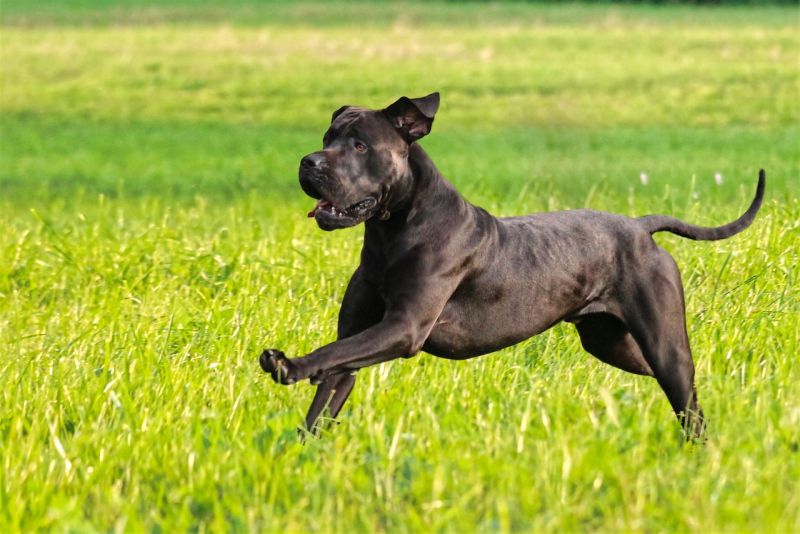
You always want to set your dog up for success, right? With dog training, you want to create the best environment possible for learning and positive growth, which means crossing your Ts and dotting your Is before putting your pup to work.
By following these simple suggestions, you can have a happier, more productive session:
- Practice pre-training exercise: Exercise your dog’s body and brain before training to work out any pent-up energy or frustration whenever possible. Nosework or puzzle games are excellent starting points, along with backyard play.
- Select the right venue: Not all places are appropriate when you’re beginning training, especially if your pup is extremely fearful or reactive. Skip super dog-saturated places like dog parks or pet stores at first and opt for locations that give you plenty of space to breathe, like open-air parks or around your neighborhood. You may also want to skip hiking trails since they don’t offer much wiggle room if you need to pass another dog. You can build up to these more pup-populated places over time.
- Use dog management techniques to stay under your dog’s threshold: When you’re not actively training, avoid triggers that can overstimulate your dog. This might mean walking your dog at off-peak times (like right before or after work) or utilizing parked cars and benches to form visual barriers. You want to prevent your pup from repeating past reactive behaviors like lunging or barking when he’s off the training clock. When you can’t avoid a trigger, try a touch or “look at me” command to break his focus on the other dog.
- Keep it short: Training sessions shouldn’t exceed 10 to 20 minutes or so. These quick lessons hold your dog’s attention and fine-tune his responses without leaving him overworked or bored.
- Observe body language: Watch your dog’s body language for signs he’s nearing his threshold during training, such as yawning, nose licking, or refusing to redirect his focus from other dogs. This is him saying, “I’m stressed about this.” Some of these stress signals are to be expected, as this is challenging work for your dog! However, if yo usee a lot of this body language, it’s time to get more distance. These stress signals can also be your dog’s way of saying “All right. I’ve had enough,” indicating the training is becoming overwhelming for him and that it’s time to end the session.
- Stay flexible: Sometimes, a dog is too stressed out or not in the mood to train. Like us, pups have bad days. Instead of training, you can practice a brain game like “Find the Hidden Treat” to work out that frustration or go for a fun Sniffari walk together in a quiet, stress-free environment. You might need a break, too, and that’s OK!
- Remain positive: No matter what type of dog-training philosophy you prefer, there’s no place for negativity in training. While it can be frustrating when your dog doesn’t cooperate, it’s important to stay level-headed and upbeat. You don’t want to use aversive training tools or scare your dog by yelling at him, as this can only worsen his issues and undo all the hard work you’ve done together.
- Set attainable goals: Not every dog is a social butterfly, and you shouldn’t try to force yours to be one. However, you should be able to pass another dog during a walk without World War 3 breaking out.
Teaching your dog to touch or hand target is a fun and easy training game, plus it can be used to help your dog disengage from triggers. With this command, your dog “touches” a target (usually your hand) with his nose.
Once your dog gets the hang of it, try another command like sit, paw, or lie down. The goal is to give your dog something to do instead of reacting. Many owners prefer this, especially in the beginning, over a “Look at me” command since a touch is a more straightforward action that gives your dog a task to complete.
Tips for Getting Your Dog Extra Space When Working on Aggression
As mentioned above, you want to pick a venue that sets your dog up for success and doesn’t lead to any close calls.
That said, you can’t control every variable, and unfortunately, some owners allow their dogs off-leash to run amok or insist on doing a doggy introduction, which can put you in a serious pickle while working on aggressive dog training with your pup. You can still maintain an upper hand, however.
Give your dog the breathing room he needs and give yourself peace of mind by:
- Speaking up: Don’t be afraid to say something if someone walking a dog wanders too close or has an off-leash dog. You are your dog’s biggest (and often, only) advocate. Ask the other owner to back up or leash his dog if he’s not in an off-leash zone.
- Using a muzzle: It may not feel fair to your dog, but most people respect this tool in passing and maintain their distance. Muzzles are also a must in high-traffic areas if your dog may bite or nip at another canine that gets too close.
- Opting for a warning harness: Also available in leash form, these garments say loud and clear that your dog needs space with inscriptions like “use caution” or “not friendly.”
- Utilizing sight barriers: Let your environment work with you during training. Use trees, parked cars, or even playground equipment as natural breaks in your dog’s line of sight to the other dog to reduce his stress levels.
- Preparing for emergencies: While you may not need them, it’s best to bring dog deterrent spray or an air horn along during sessions just in case. Remember: You can’t control every variable, and freak accidents happen, so it’s best to be prepared.
- Consulting a professional: If training stalls or you feel overwhelmed, don’t be afraid to reach out to a certified dog behavior expert. Asking for help isn’t a failure. It’s going the extra mile to ensure your dog overcomes an obstacle, which deserves serious kudos.
***
Dealing with dog aggression issues is tough work, but you can do it with patience and perseverance. There are plenty of certified dog behaviorists out there to assist if you’re stuck in the weeds, too.
Have you tried any of these methods to combat dog aggression? Let us know in the comments.
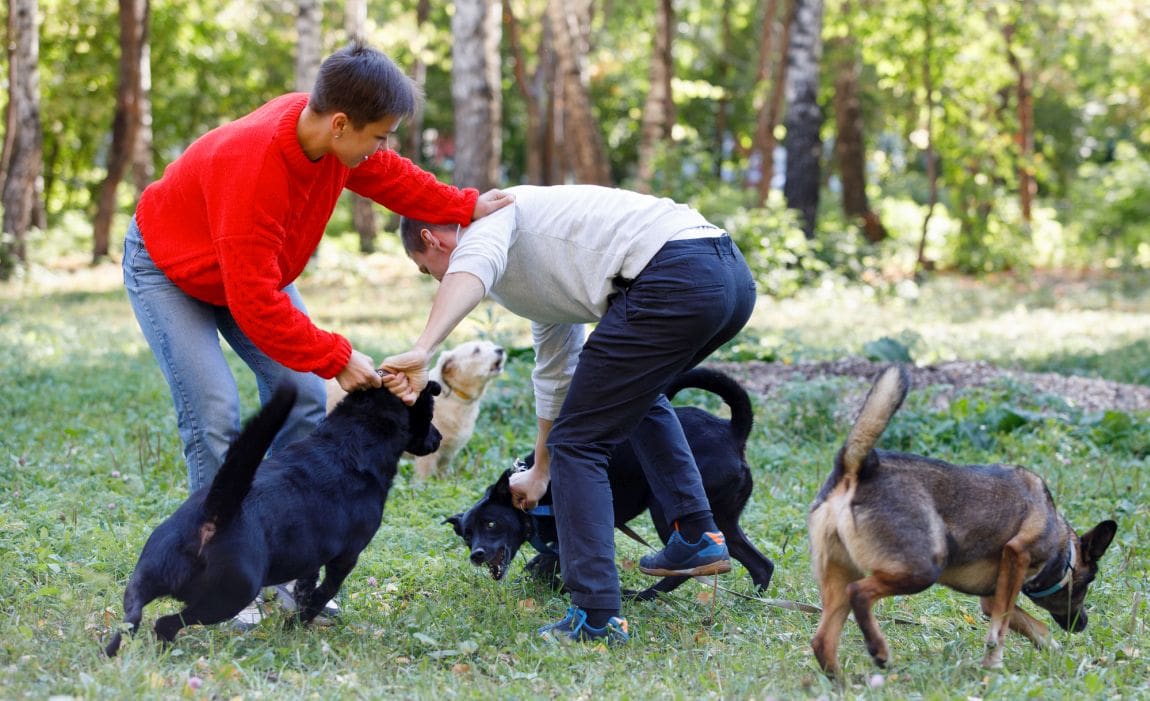

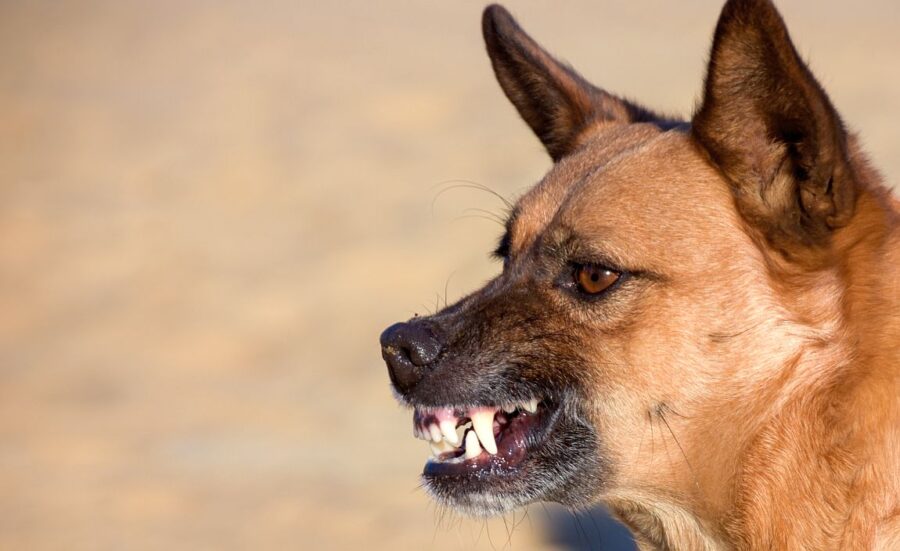


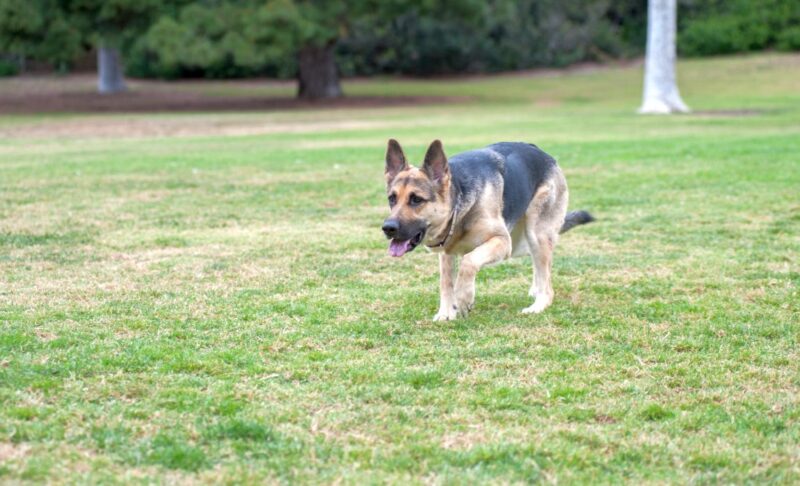
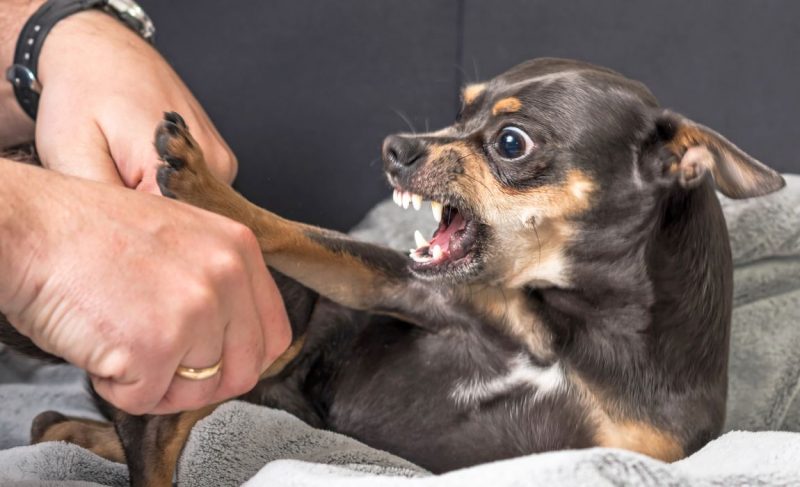
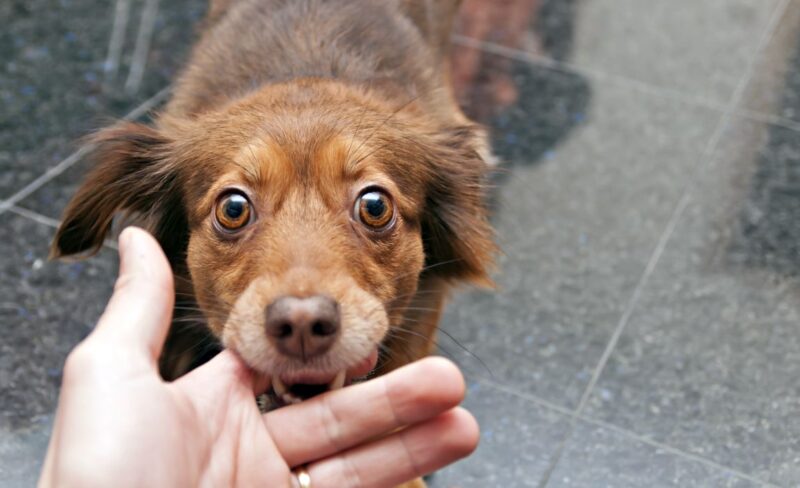
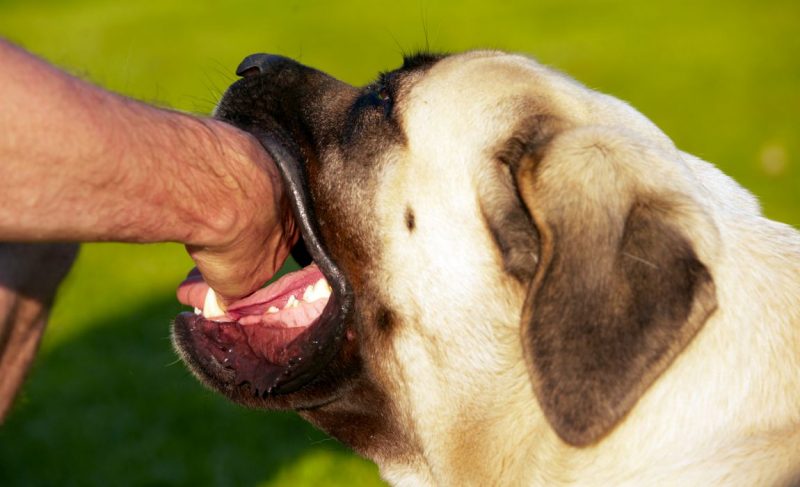
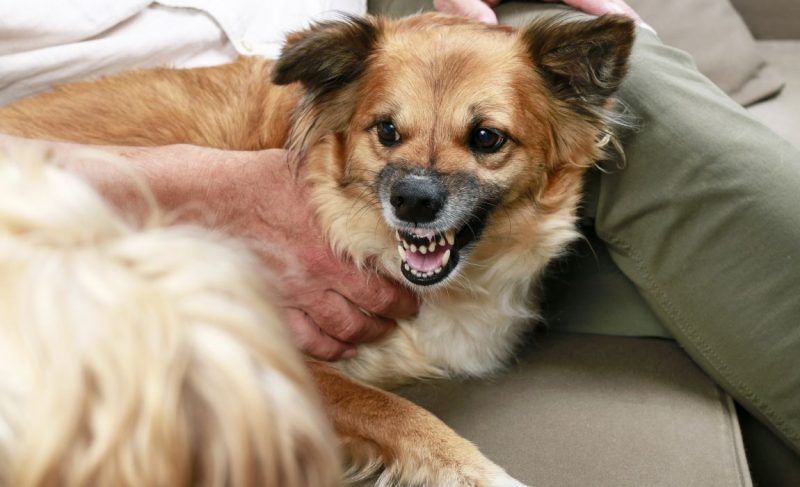
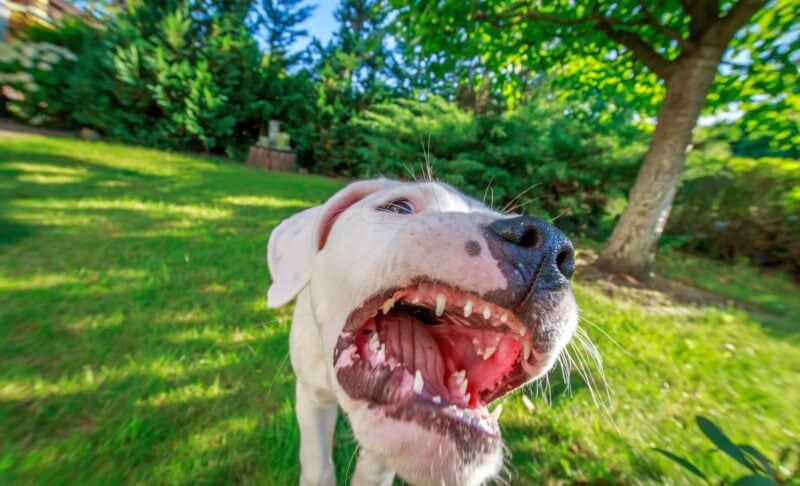

Leave a Comment